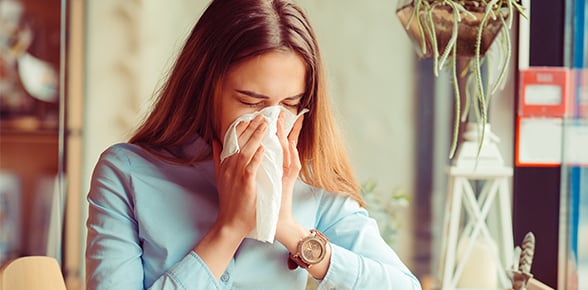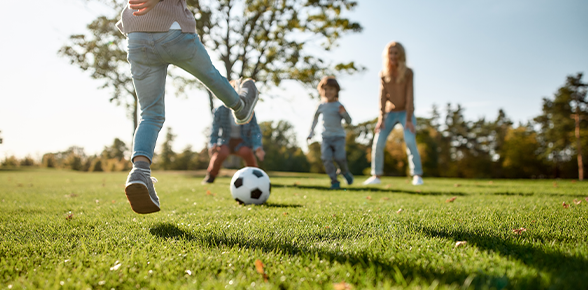For children who are susceptible to hayfever, playing in the school playground, backyard or park can make it difficult to avoid the airborne pollen that can trigger their allergic reactions.
For parents, dealing with their kids’ symptoms like itchy eyes, a runny nose and general discomfort can bring the best part of the day to a grinding halt. We’ve identified the most common hayfever symptoms and effective treatments, to help parents better manage the health and wellbeing of children with hayfever.
Causes of hayfever in children
Around 10% of Australian children under 14 experience hayfever1. The following triggers are the most common causes of hayfever in kids:
- pollen (from grasses, flowers and trees)
- dust mites
- animal fur or hair (dander)
- mould spores
- cigarette smoke
Symptoms of hayfever in children
It’s important to look out for the following symptoms of hayfever in children, so the triggers can be removed and treated as soon as possible:
- Runny nose
- Congestion
- Red, swollen, itchy or watery eyes
- Bouts of sneezing
- Itchy ears, nose, throat
How does hayfever affect children?
The Royal Children’s Hospital Melbourne2 reports that if hayfever is left untreated it can lead to poor sleep quality, tiredness and daytime sleepiness. In some cases, hayfever can also make asthma worse, increase the chance of sinus infections, affect your child's learning and performance, lead to bad breath, a husky voice and/or a sore throat and cause more frequent eye infections because children rub itchy eyes.
How to help manage hayfever in children:
While it’s impossible to keep children away from all the causes of hayfever and allergies, it’s important to identify your child's allergy (by seeking a medical diagnosis) and minimising the child’s exposure to specific triggers.
- When returning home from school, the child should shower and change into clean clothes
- Wash uniforms regularly, and even daily on high pollen count days
- Wash soft toys regularly, and wash plastic toys in warm, soapy water
- Don't let pets sleep or jump on the child's bed
- Keep pets outside when possible
- Get outside on the weekends when the pollen count is low (avoid morning and evening)
- Use Sensitive Choice-approved cleaning products and laundry detergent that reduce irritation
- Pack items in your child's school bag such as Kleenex Allergy Comfort tissues and hand sanitiser to help relieve symptoms when they occur
- Keep children inside while the grass is being mowed
- Consider planting a low allergen garden with plants pollinated by birds or insects as these are less likely to trigger allergic rhinitis
- If children are sensitive to particular weeds or trees, have them removed or replaced
Children's hayfever treatments:
- Visit your GP to discuss for the most suitable oral antihistamines for hayfever
- Little Eyes® cleansing wipes - Sensitive Choice
- FESS® saline nasal range - Sensitive Choice
All content and advice are provided on behalf of Sensitive Choice, an initiative of the National Asthma Council Australia, in partnership with Kleenex®. The advice provided in this material is general in nature and is not intended as medical advice. If you need medical advice, please consult your health care professional.
Kleenex® Allergy ComfortTM Tissues are free from lotion, dye & fragrance, and are dermatologically tested with reduced linting for hay fever and allergy sufferers. Grab a box today from Woolworths, Coles, Amazon or your local IGA Store
Sources:






